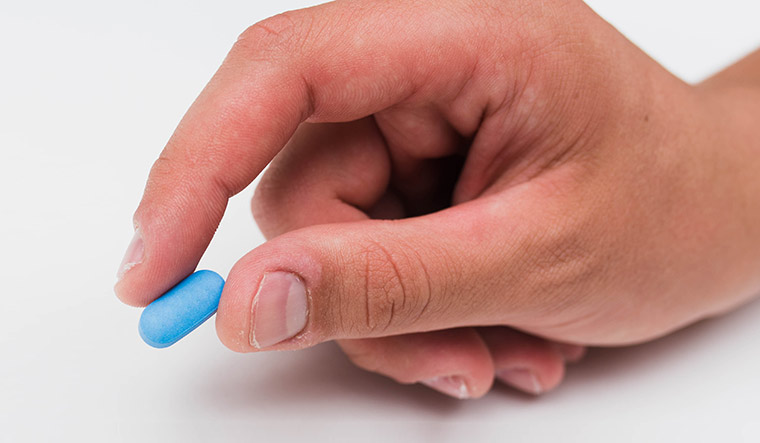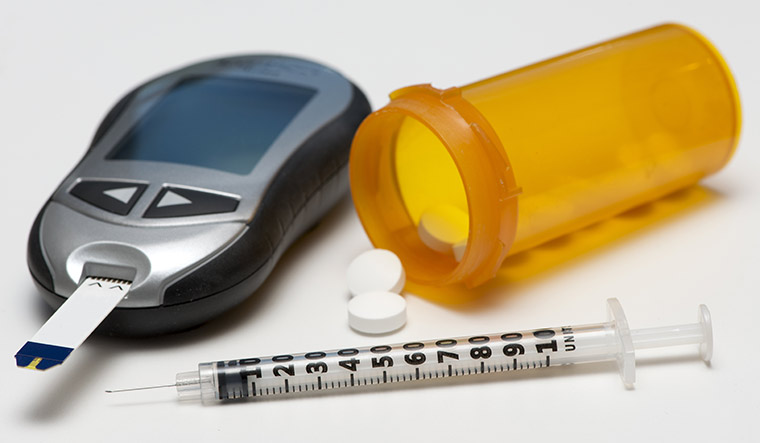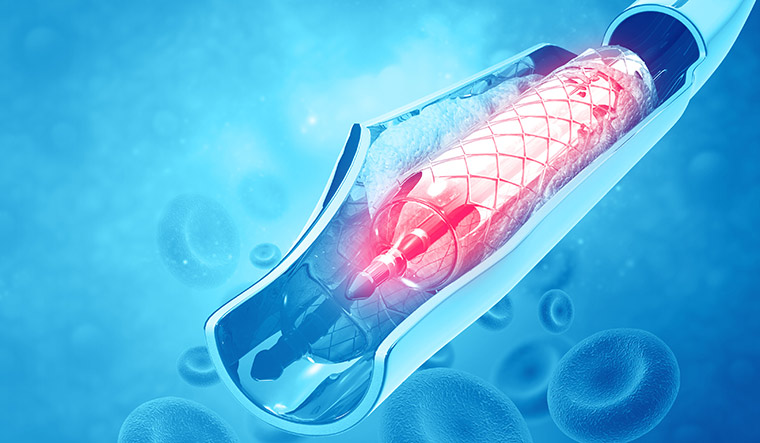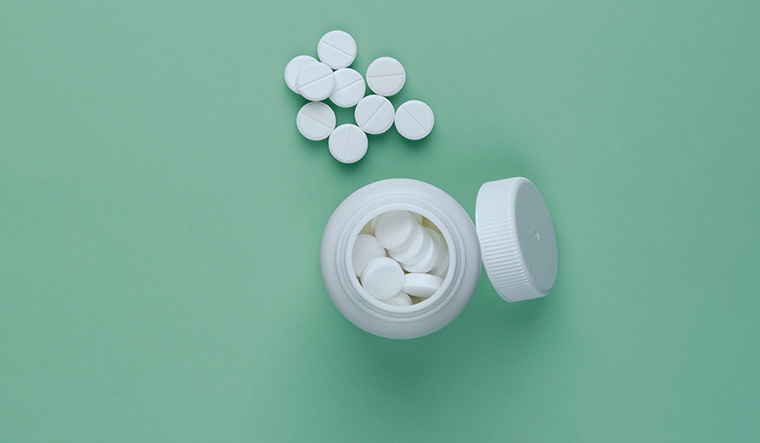New guidelines issued by the US Preventive Services Task Force is recommending all healthy people at high risk of HIV infection take a daily pre-exposure prophylaxis (PrEP) pill. PrEP is a combination of two HIV medicines—tenofovir and emtricitabine.
According the US Centers for Disease Control and Prevention, taking PrEP pill daily can reduce the risk of getting HIV from sex by more than 90 per cent. Combining PrEP with condoms can reduce the risk of infection even further. PrEP can also reduce the risk of HIV infection in people who inject drugs by more than 70 per cent.
PrEP is highly effective in preventing HIV if used as prescribed. It is much less effective in people who do not take it consistently.
Side effects are mild and include some kidney and gastrointestinal issues. The new recommendations are published in the Journal of the American Medical Association
Additional defence
A landmark clinical trial has shown that a common diabetes drug—canagliflozin—may also reduce the risks of kidney failure and cardiovascular events, including heart failure, in patients with diabetes and kidney disease.
The study published in the New England Journal of Medicine included 4,401 patients with diabetes and chronic kidney disease from 34 countries. Half of the participants were given canagliflozin, while the other half received a placebo. All the participants received treatment for kidney disease.
People who took canagliflozin had a 30 per cent reduced risk of developing kidney failure, a 30 per cent lower risk of dying from either kidney failure or cardiovascular disease, a 39 per cent lower risk of heart failure, and a 20 per cent reduced risk of major cardiovascular outcomes, including heart attack, stroke and cardiovascular death.
Stents for elderly, too
Percutaneous coronary intervention (PCI), also known as angioplasty with stent, is a non-surgical procedure that unlocks arteries that have been narrowed by plaque buildup. The blocked arteries can lead to a heart attack. PCI is safe, effective and improves overall survival, and is widely used in younger heart-attack patients.
But what about older patients?
To find out if PCIs work in older adults, researchers analysed medical records of nearly 470,000 older patients admitted to US hospitals who faced their first heart attack.
They grouped patients aged 75 to 79 years as 'young-old', 80 to 84 as 'middle-old' and 85 and older as 'old-old'.
Though the use of PCI has been steadily increasing among all age groups, 'old-old' patients were the least likely to receive the lifesaving procedure.
PCI was performed in 38 per cent of young-old patients compared to 33 per cent of middle-olds and 20 per cent of old-olds.
Overall death was 5 per cent lower among the young-olds in the PCI group compared to those who did not get the procedure. The reduction in death with PCI was 49 per cent and 42 per cent lower among the middle-olds and old-olds, respectively.
The findings were published in the American Heart Association journal Circulation: Cardiovascular Interventions.
DID YOU KNOW
Pregnant women who take benzodiazepines, a class of drugs prescribed for anxiety, seizures and insomnia that include Xanax and Valium, are nearly twice as likely to suffer miscarriages.
JAMA Psychiatry
Count your steps
According to a US study published in the JAMA Internal Medicine, taking as few as 4,400 steps per day was significantly associated with a lower risk of death and the benefits seemed to taper off at around 7,500 steps per day, which is much less than the 10,000 steps touted by many wearable devices.
For the study, 16,741 women, average age 72 years, wore an accelerometer that counted steps and measured stepping intensity for seven consecutive days.
During an average follow-up of over four years, 504 women died. Among them, 275 of them were in the bottom 25 per cent of steps walked, an average of 2,700 per day.
The study found a close association between daily step count and mortality risk. Women who took about 4,400 steps per day had a 41 per cent lower risk compared to those who walked 2,700 steps per day. The risk of death steadily declined with more steps taken, but levelled off at around 7,500 steps per day.
Rehab after big fight
Advances in cancer screening, detection and treatment have significantly improved the survival odds of cancer patients.
But cancer survivors are 1.3 to 3.6 times more likely to die from cardiovascular causes and 1.7 to 18.5 times more likely to develop diabetes, high blood pressure, high cholesterol or other risk factors for heart disease than someone without a cancer history.
Cancer treatments can damage the heart and survivors may also have to grapple with weight gain or loss of fitness.
A new scientific statement from the American Heart Association published in the journal Circulation, aims to draw attention to the importance of adopting a cardiac rehab plan for cancer survivors—cardio-oncology rehabilitation—similar to the one used for heart attack survivors.
The aim of the programme is to identify cancer survivors at risk of heart disease and provide exercise training, nutritional guidance, information about management of weight, blood pressure, cholesterol and diabetes. It also includes counselling to reduce stress and anxiety. The programme can help people regain some of the cardiorespiratory fitness lost during cancer treatment and improve their muscular strength and quality of life.
DID YOU KNOW
Men who wear moustaches have a 16 times lower risk of developing actinic keratosis (a pre-cancerous lesion) on the lower lip that can increase the risk of a cancer called squamous cell carcinoma.
Journal of the American Academy of Dermatology
Sign of serious problems
Fainting during pregnancy is often considered normal and benign.
But according to a Canadian study published in the Journal of the American Heart Association, fainting spells during the first semester could be a sign of health concerns for both the mother and baby.
The researchers reviewed the birth records of 481,930 babies and the medical records of their mothers for one year after delivery.
About one per cent of the mothers experienced fainting spells. Among them, 32 per cent of those were during the first trimester, 44.1 per cent during the second trimester and 23.6 per cent during the third trimester.
The risk of preterm birth was higher among women who fainted during the first trimester. Children born to mothers who had fainted multiple times were more likely to have congenital anomalies.
Women who fainted during pregnancy had higher rates of cardiac arrhythmia and further fainting episodes after delivery.
DID YOU KNOW
Increasing the reach of treatment for high blood pressure to 70 per cent of the world’s population could save the lives of 39.4 million people; reducing sodium intake by 30 per cent could prevent another 40 million deaths; and eliminating trans fat could prevent an additional 14.8 million deaths.Circulation
Are PPIs safe?
Long term use of popular heartburn drugs can increase the risk of premature death from cardiovascular disease, chronic kidney disease and upper gastrointestinal cancer.
Popular proton pump inhibitors (PPIs), which include drugs such as omeprazole, lansoprazole, pantoprazole, rabeprazole, esomeprazole and dexlansoprazole, are often prescribed for heartburn, ulcers and acid reflux.
For the study published in The BMJ, researchers studied the medical records of 157,625 people who were prescribed PPIs and 56,842 people taking another class of heartburn drugs known as H2 blockers.
PPI users had a 17 per cent increased risk of death compared with the H2 blocker users. PPI use was specifically associated with deaths from cardiovascular disease, chronic kidney disease and upper gastrointestinal cancer.
The risk increased with the duration of PPI use and even when the drugs were taken at low doses. More than half of the people were taking PPIs without any medical indication and death rates were highest among them.
Ultra-processed menace
Two studies published in The BMJ have found a strong association between eating ultra-processed foods and an increased risk of cardiovascular diseases and early death.
For the first study, 105,159 adults with an average age of 43 years completed six 24-hour dietary questionnaires that measured the intake of 3,300 different food items that were grouped based on the degree of processing. They were followed for an average of 5.2 years.
For every 10 per cent increase in the amount of ultra-processed foods the participants consumed, the risk of cardiovascular disease increased by 12 per cent, coronary heart disease by 13 per cent and cerebrovascular disease by 11 per cent.
On the other hand, the risk of all these diseases were significantly lower in those who consumed more unprocessed or minimally-processed foods.
In the second study, 19,899 adults with an average age of 38 years completed a food questionnaire of 136 items. Among them, 335 died during an average of ten years of follow-up.
Those who consumed more than four servings of ultra-processed foods per day had a 62 per cent higher risk of all-cause mortality compared with those who ate less than two servings per day.
For each additional daily serving of ultra-processed food, mortality risk increased by 18 per cent.
Advanced combination
Adding a newer drug, Ribociclib, which is taken as a tablet, to the standard hormone treatment can improve the odds of survival by about 30 per cent in younger women with advanced breast cancer.
Ribociclib belongs to a class of drugs called CDK4/6 inhibitors. They work by targeting cancerous cells and blocking their ability to multiply.
The findings of the current study included 672 women, aged 25 to 58, with advanced breast cancer, who were premenopausal or going through menopause. All had cancer that was hormone receptor-positive, but lack a protein called HER2.
Half of the patients were randomly assigned to take Ribociclib in cycles of three weeks on the drug and one week off, while the other half took placebo tablets.
All the women received standard hormonal therapy and drugs to stop the production of the hormone oestrogen.
Among them, 70 per cent of patients on hormone therapy plus Ribociclib were still alive three and half years later compared with only 46 per cent of those on hormone therapy alone.
The drug is less toxic than chemotherapy. Possible side effects include fatigue, nausea, diarrhoea and constipation, and a drop in certain white blood cells that help fight infections.
CONTRIBUTOR: SHYLA JOVITHA ABRAHAM








